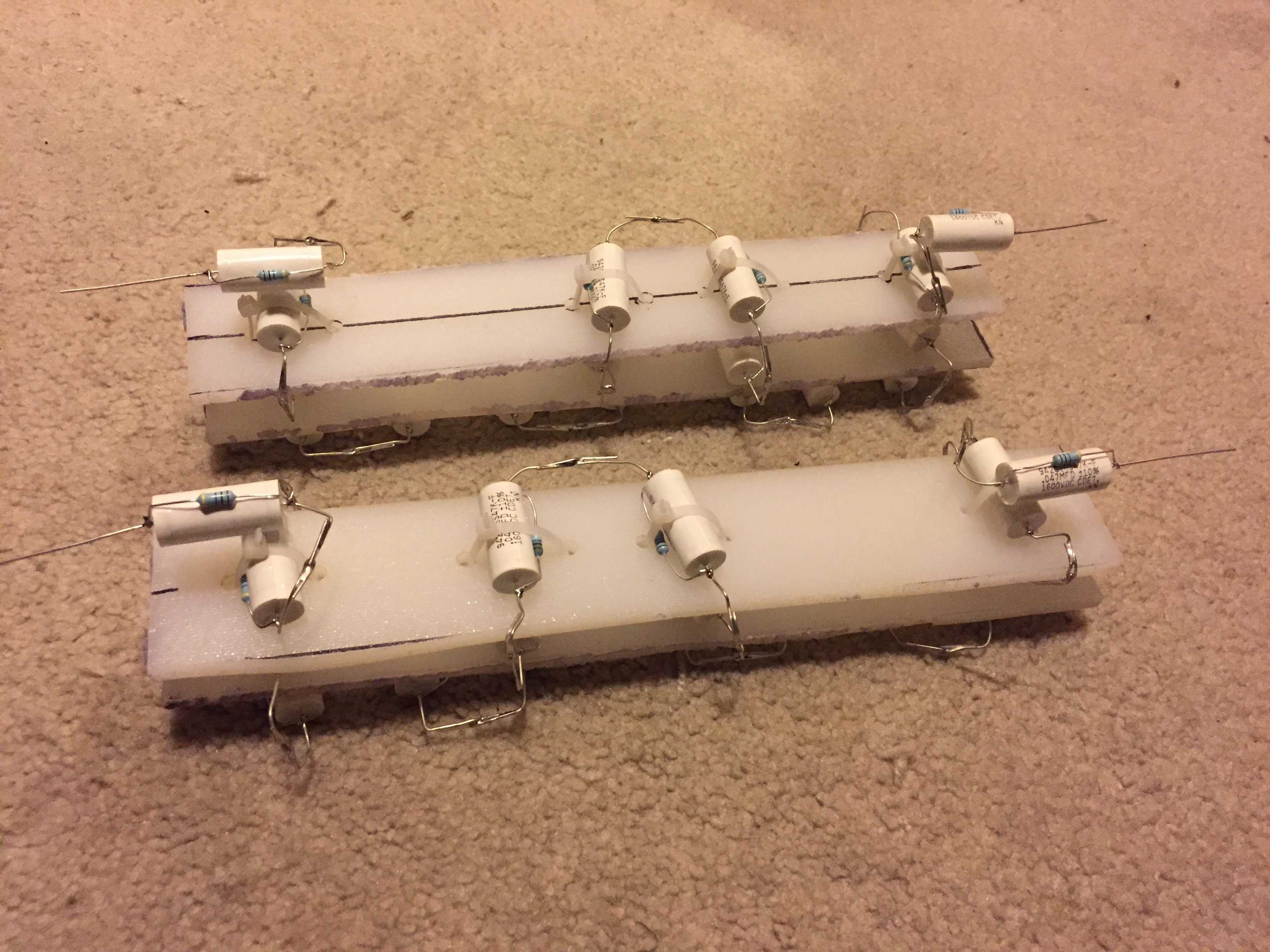 http://iamtechnical.com/sites/default/files/charging-a-capacitor.gif
http://iamtechnical.com/sites/default/files/charging-a-capacitor.gif
Capacitors store energy in an electric field by using a power source to push electrons onto one of two parallel plates. Because electrons are negative, that plate has a negative charge, and the other one has a positive charge. The amount of charge that the capacitor can hold with a certain voltage between the plates is called capacitance, measured in farads (F). Also between the plates is some kind of material, called a dielectric, that weakens the electric field of the capacitor and increases its capacitance. When the plates are connected through a circuit, the charge seeks to reach equilibrium, and the energy is released.

Capacitors for Tesla coils are funny things. They don't need to have that much capacitance, but they still need to have the ability to withstand high voltages and currents. This means that we can't use one small capacitor, or it will be burned up, but we can't use one really big capacitor, because we do not need to hold that much charge.
The solution, then, is to use a large number of small capacitors, some wired in series and some in parallel. The ones in series increase the amount of voltage that the circuit can handle. These strings of capacitors, when wired in parallel, increase the capacitance of the circuit. I did this with thirty-four .047 microfarad capacitors, each with a voltage rating of 1600 volts DC. I soldered together two strings of seventeen capacitors each. Across every one I put a resistor so that any charge remaining in the capacitors after the power is switched off gets "bled" out into heat energy.